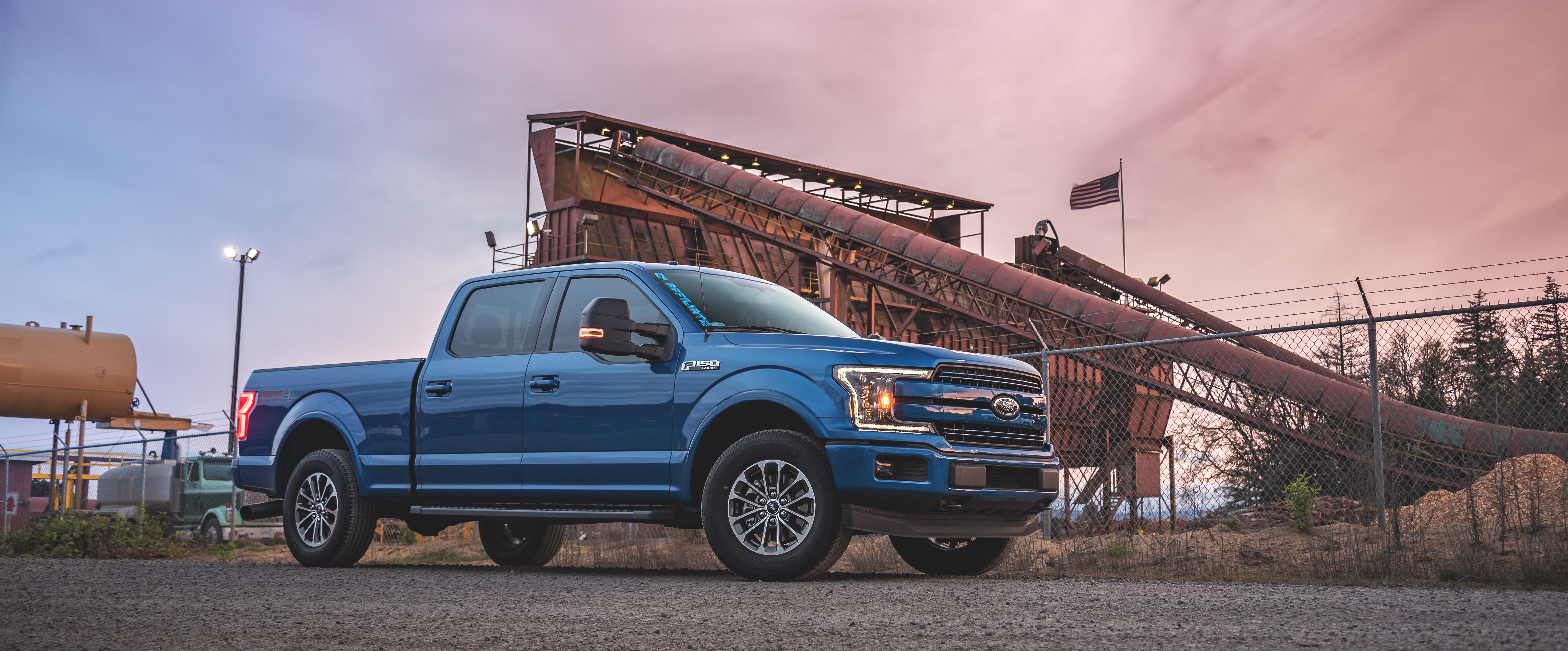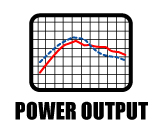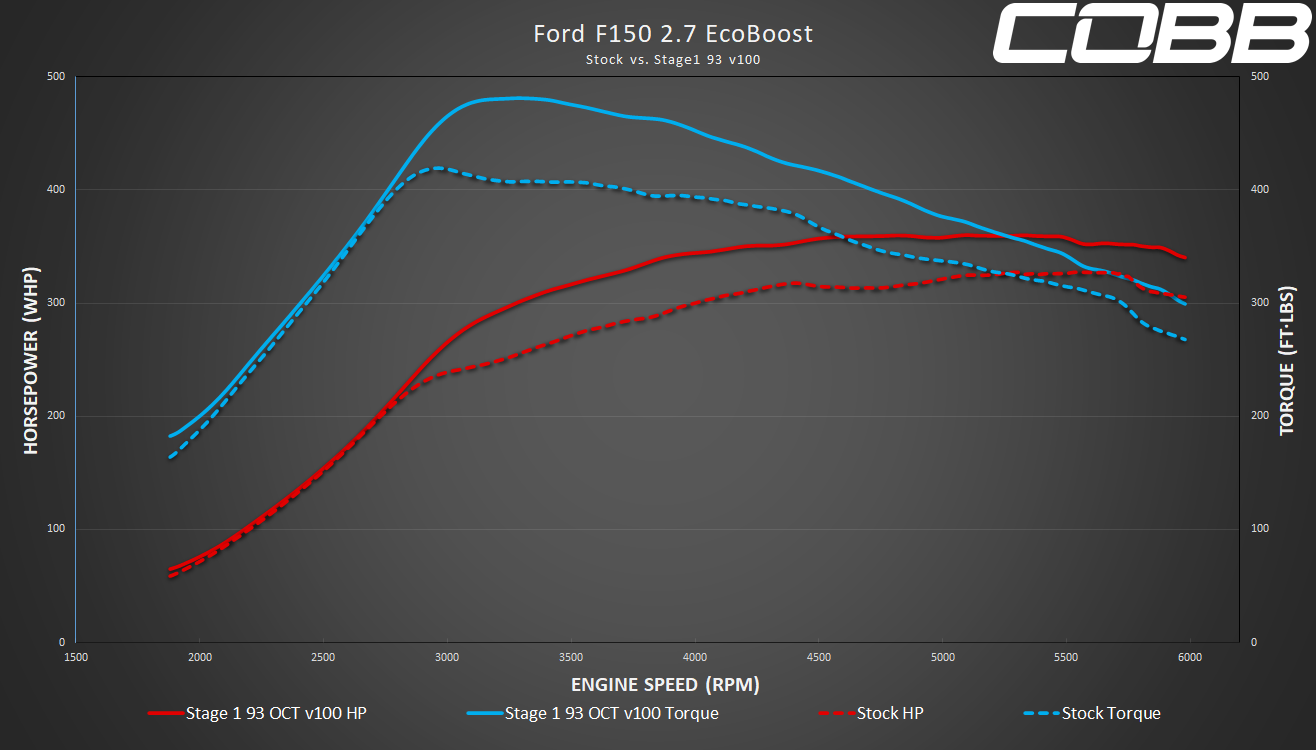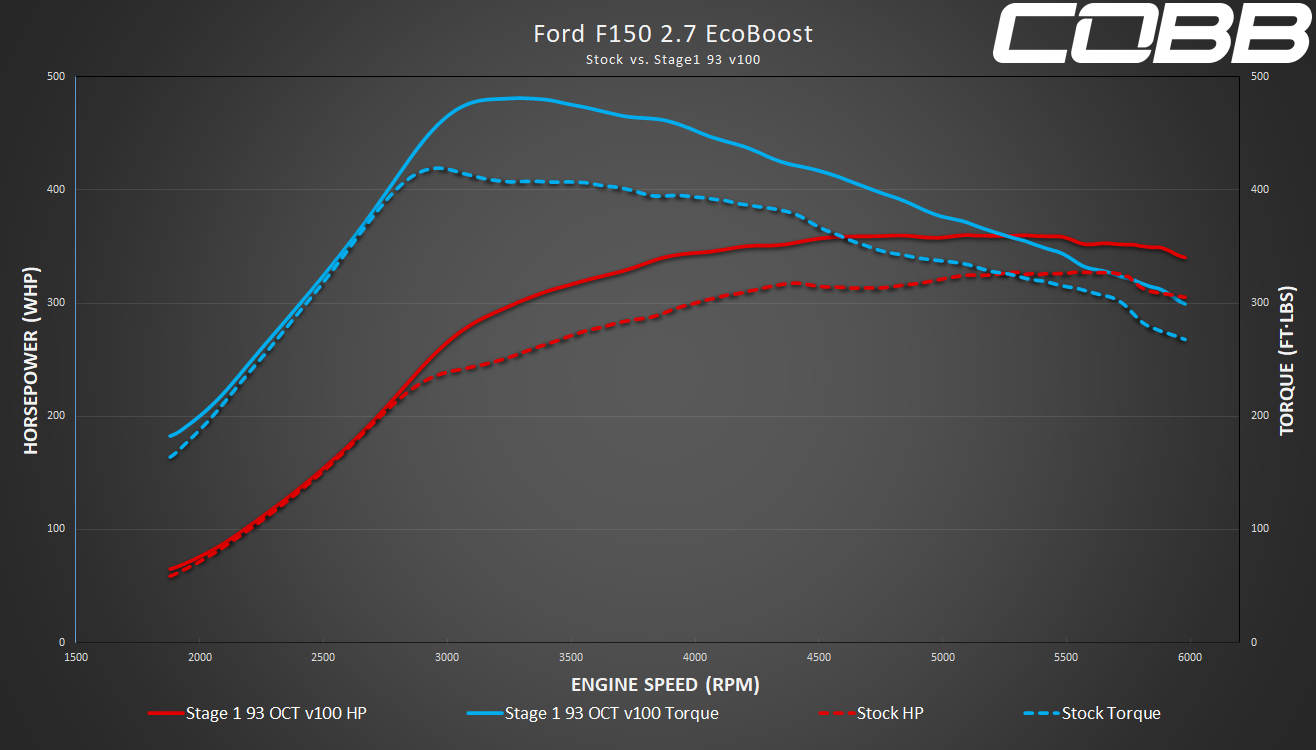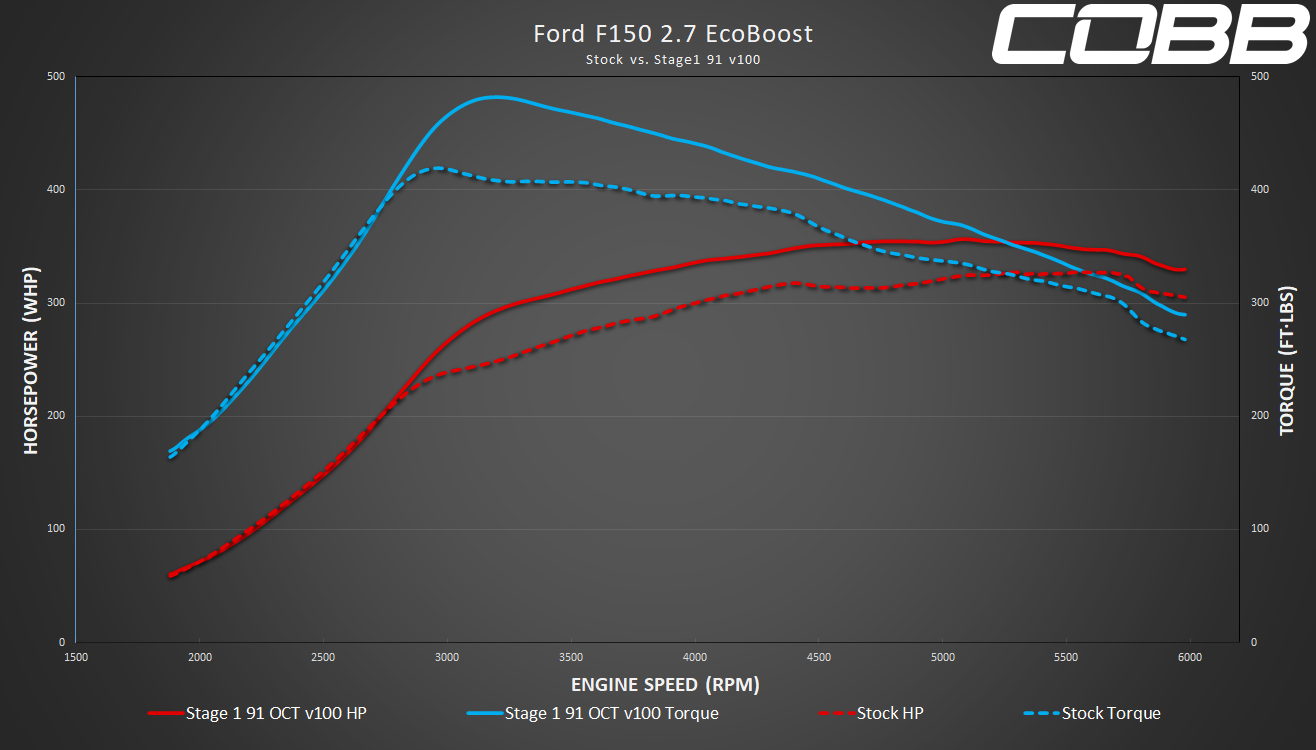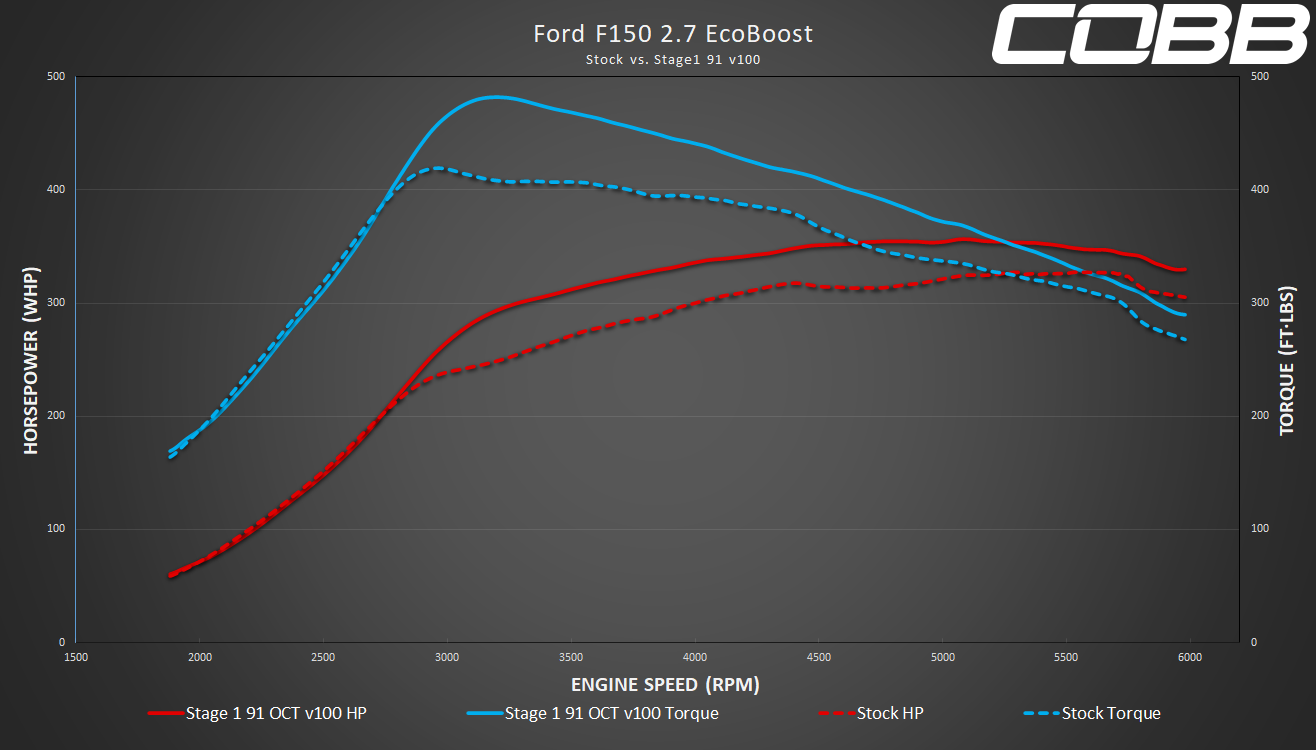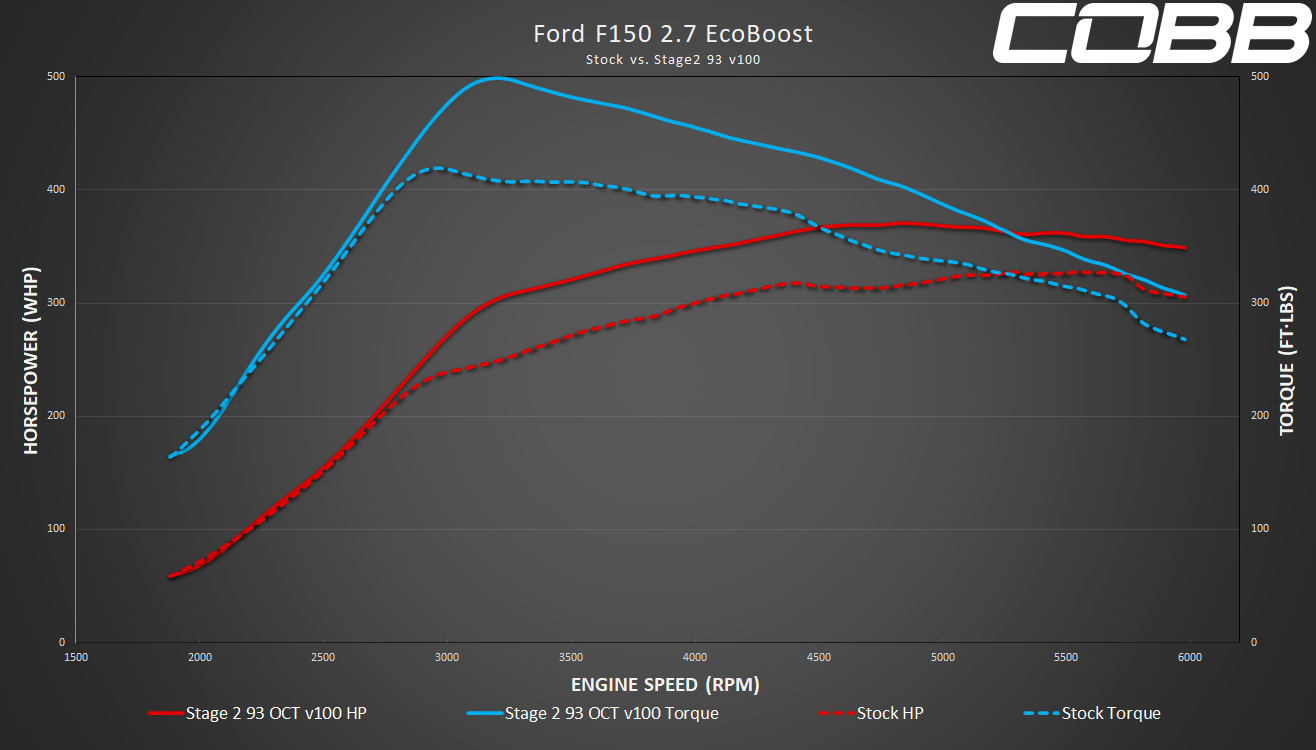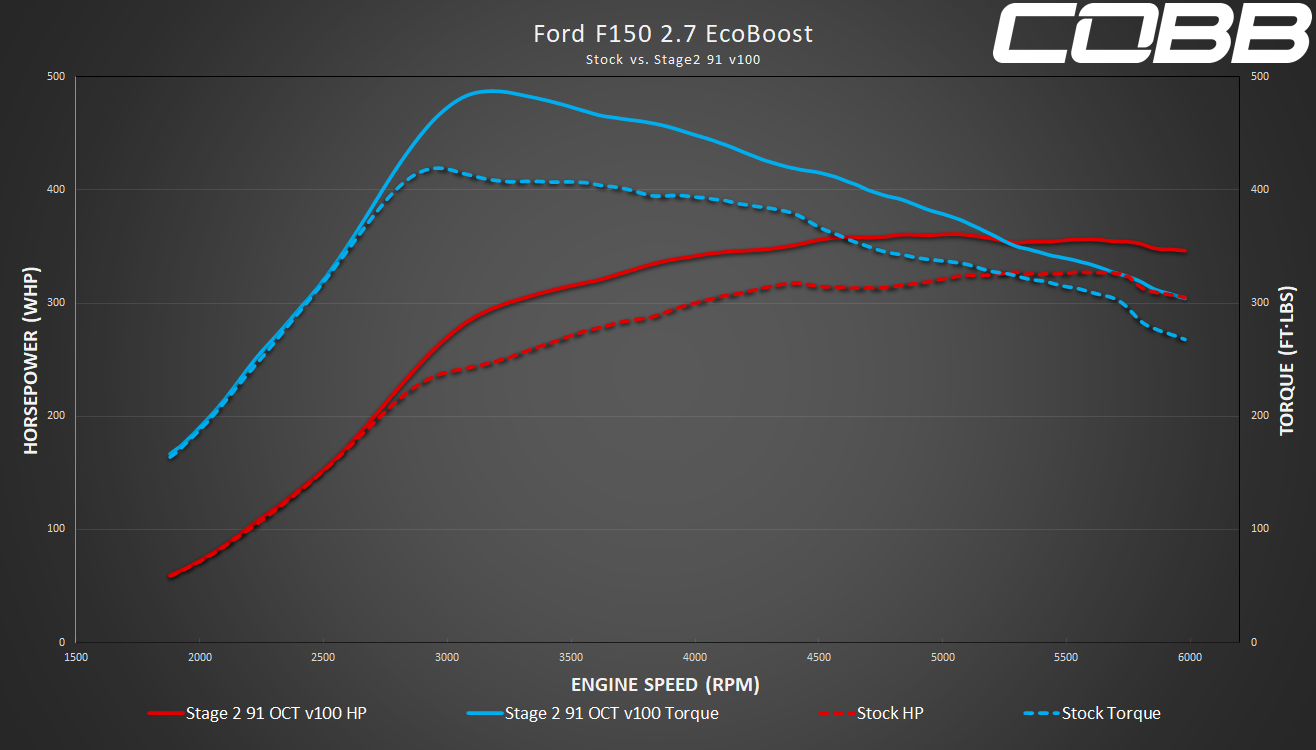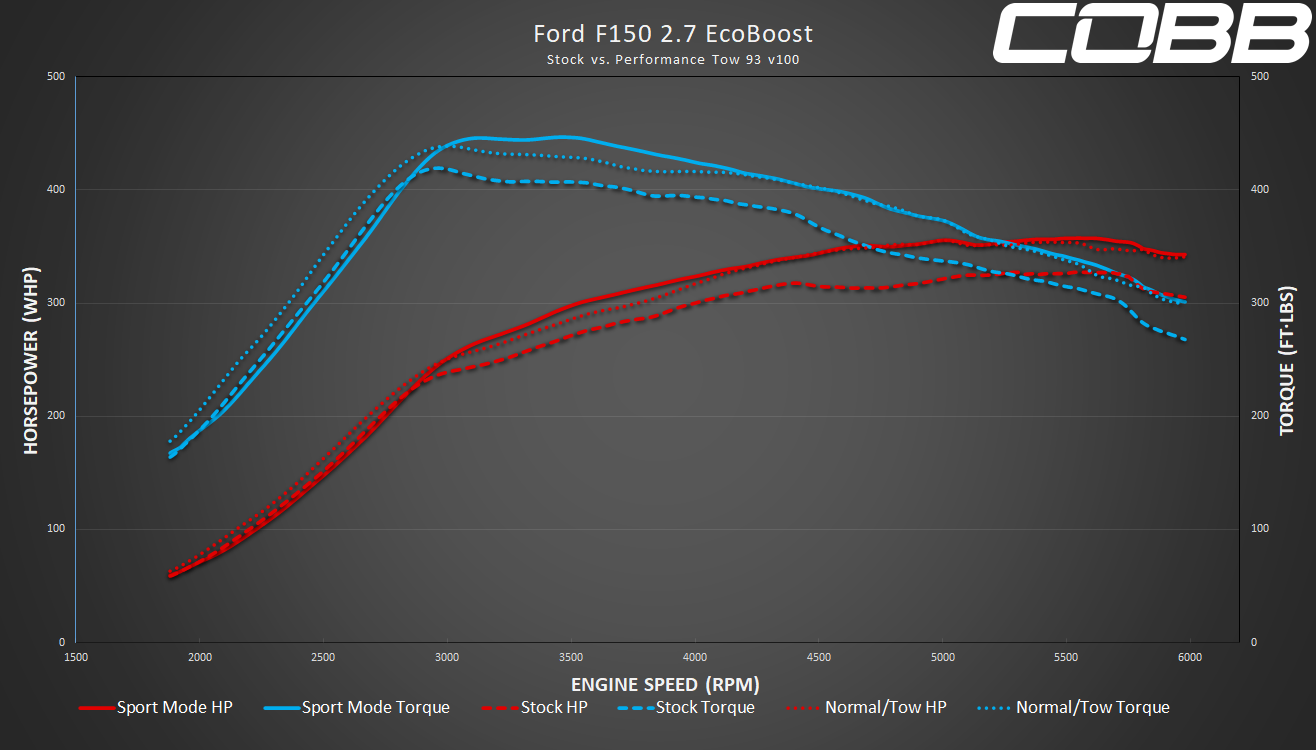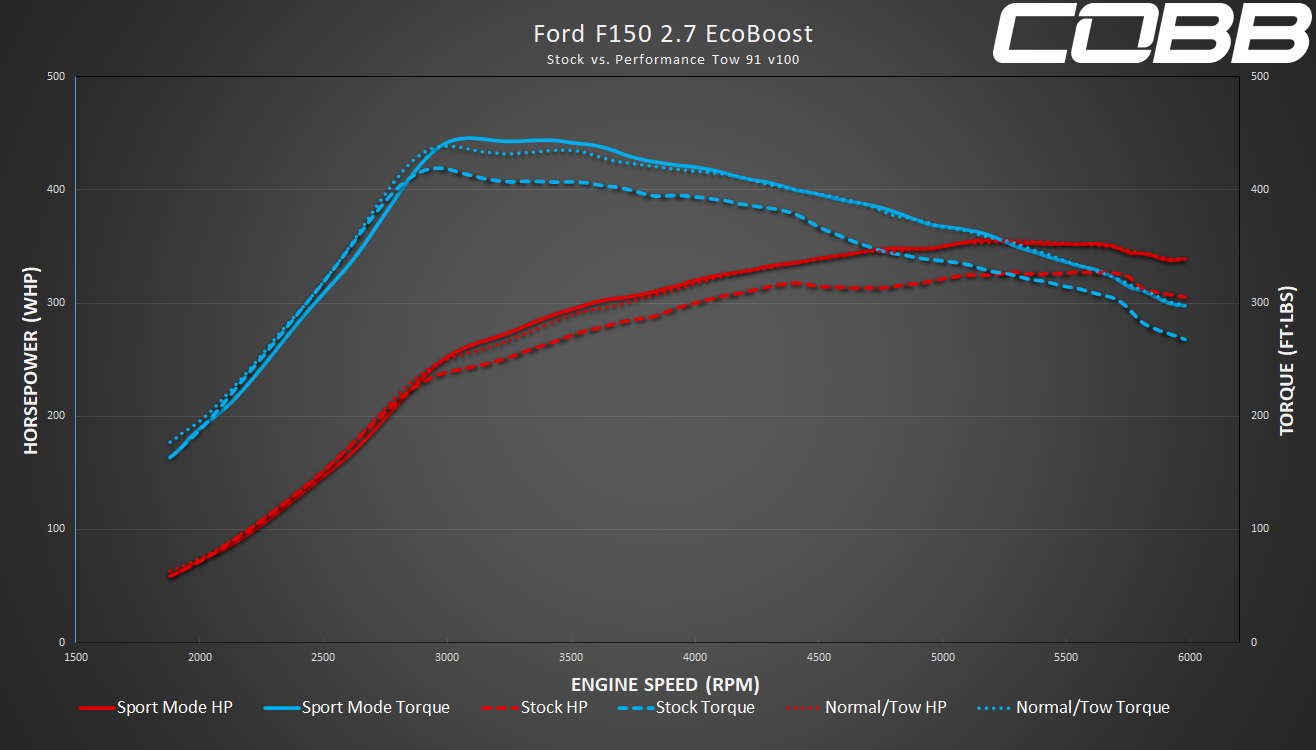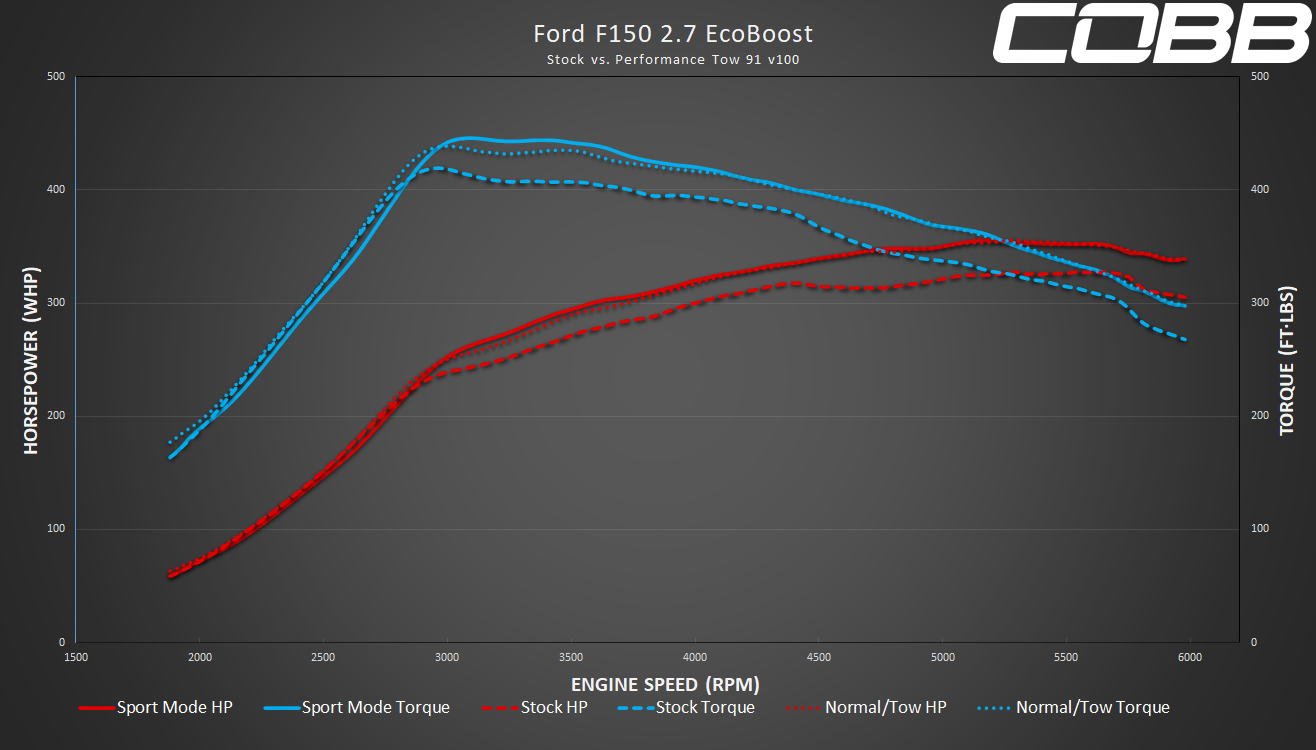Supported Vehicles:
- USDM 2018-2020 F-150 2.7L EcoBoost
Required Firmware:
AP3-FOR-008: 1.7.4.2-19319
| 2018-2020 F-150 2.7L (combined ECU/TCM) |
|---|
Map Revision:
|
Transmission calibration information can be found here: F-150 & F-150 Raptor TCM Map Notes
COBB Custom ECU Features
- COBB Custom Features: Disabling Auto Start/Stop on Ford Models
- COBB Custom Features: Dynamic Pedal Control for Ford F-150 / RaptorTrucks
- COBB Custom Features: Fuel Pump Activation via Accessport on Ford F-150 / Raptor
- COBB Custom Features: F-150 Tire Size Adjustment
- COBB Custom Features: Valet Mode on Ford F-150 / Raptorfor Ford Trucks
| Warning | ||
|---|---|---|
| ||
COBB's staged performance maps are designed for performance driving and have not been optimized for use when towing. COBB recommends flashing the Performance Tow or Stage0 ECU calibrations and using the truck's 'Tow' drive mode. |
Map Availability:
Stage1
93OCT 98RON
91OCT 95RON
Stage2
93OCT 98RON
91OCT 95RON
Performance Tow
93OCT 98RON
91OCT 95RON
Notes on Knock Octane Modifier (KOM):
- Knock Octane Modifier (KOM) is a learned variable that will change dependent mainly on knock corrections over time. KOM can dictate how much load, boost, ignition timing, etc... the truck will run. The lower the KOM the less the power output. Ideally this value should be at +1.0 but it can change depending on conditions other than knock.
- Knock Octane Modifier (KOM) will be limited to less than or equal to 0 while Engine Coolant Temperature is below 130*F (54.5*C) on COBB OTS maps. By 135*F (57*C), KOM will return to the retained learned value if it is greater than 0. It is common to see a KOM of 0 when the vehicle is warming up. Limiting Knock Octane Modifier during warm up is done to prevent unnecessary strain before the engine has reached a reasonable temperature.
- Knock Octane Modifier (KOM) will be limited to -1.0 while Engine Coolant Temperature is above 250*F (121*C) on COBB OTS maps. This is to prevent heavy load in the case the vehicle begins to overheat due to a mechanical failure.
- Knock Octane Modifier and Coolant Temperature are both parameters the Accessport can monitor.
Closing Warnings and Precautions:
- Use of inappropriate calibration/modification combinations will promote engine damage.
- Seek the help of a professional COBB Accesstuner Professional should your vehicle fall outside of OTS configurations.
- COBB OTS mapping is NOT designed to be used with upgraded aftermarket boost actuators or solenoids. Doing so may result in much higher than desired boost and potential engine damage. Seek the help of a COBB Accesstuner Professional should your vehicle fall outside of OTS configurations.
- Top Tier gasoline should be used where available. Use of lower quality fuels can result in catastrophic engine damage.
Revision History:
| Version # | Notes: |
|---|---|
| 100 | Original release calibration for all OTS maps. Adjusted ignition timing, torque targets, boost control, commanded fueling, and base programming logic. |
